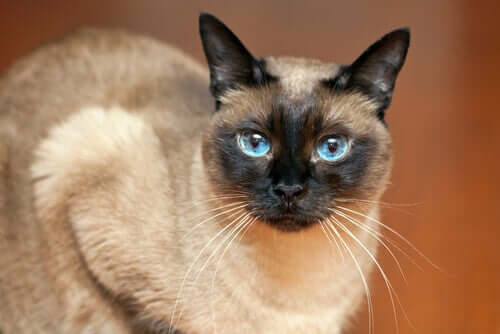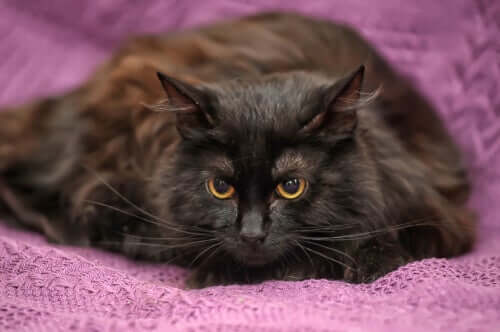Cat Fur - Why Does It Change Color?


Written and verified by biochemistry Luz Eduviges Thomas-Romero
Genetics dictates the characteristics of cat fur. This is because an animal’s genes are responsible for the color, pattern, length, and texture of their hair.
There are times when you can appreciate a change in the color of the coat and you wonder how on earth it happened. Continue reading to find out more about it.
Aging impacts cat fur just like with humans
Gray hair is a common change as we all age. This developmental milestone may be a timely reminder of never taking for granted the unconditional love we receive from our pets.
Skin temperature can change the hair color
This is the case for Asian breeds such as the Himalayan and the Siamese. The kittens of the former are born with nearly creamy fur, while the latter are born white. As they continue to grow, areas of dark hair begin to appear in their coats according to the temperature of their skin on different parts of their anatomy.
Thus, in warmer areas, such as the neck and body, their fur remains lighter. In contrast, the hair becomes darker in other areas where the skin is colder, such as the tail, legs, face, and ears.
In addition, the ambient temperature can also play a role in the color of a cat’s fur. Thus, their spots may darken or become lighter, depending on the season.
A change in the color of the coat in these breeds can also indicate they’re sick and that their temperature is higher than it should be.
Black fur may turn reddish-brown if a cat doesn’t eat meat
To maintain a dark black coat, a cat will need a good supply of tyrosine, an amino acid.
The reason for this requirement is that tyrosine is necessary for the formation of eumelanin, the pigment responsible for the black color in a cat’s fur.

Thus, when there’s a tyrosine deficiency, the fur will lose some of its colors and will change from black to a reddish color or an oxidized orange tone. Keep in mind that tyrosine deficiency is caused by the lack of animal proteins (the kind found in most types of meat).
Copper deficiency
Even though it isn’t common, a copper deficiency can lead to depigmentation of the colored layers, which causes a black cat’s fur to turn brown.
This mineral is necessary to convert tyrosine into melanin, a pigment. In addition, copper has many other functions. For example, it’s a component of several enzymes and also participates in the absorption and transportation of iron.
Dietary sources of copper include liver and some grains, but pet foods usually contain copper to ensure that pets get as much as they need.

Cat fur can change color due to medical conditions
You must rule out the presence of metabolic disorders or improper absorption of tyrosine in black cats. Especially in those whose coat changed color even though the animal follows a balanced diet.
Also, you must note that certain health conditions can interfere with the absorption of tyrosine. Black fur may turn brown in these cases.
An example of this is liver disease. This is because this is the organ in which phenylalanine is converted into tyrosine. Additionally, thyroid and kidney problems are possible causes of a change in fur color.
Consult your vet if you notice any changes in your cat’s fur. Keep in mind that you can’t stop the aging process. However, you can definitely find out what’s causing the color changes.
All cited sources were thoroughly reviewed by our team to ensure their quality, reliability, currency, and validity. The bibliography of this article was considered reliable and of academic or scientific accuracy.
- Watson, A., Servet, E., Hervera, M., & Biourge, V. C. (2015). Tyrosine supplementation and hair coat pigmentation in puppies with black coats–a pilot study. Journal of Applied Animal Nutrition, 3.
- Yu, S., Rogers, Q. R., & Morris, J. G. (2001). Effect of low levels of dietary tyrosine on the hair colour of cats. Journal of Small Animal Practice, 42(4), 176-180.
This text is provided for informational purposes only and does not replace consultation with a professional. If in doubt, consult your specialist.